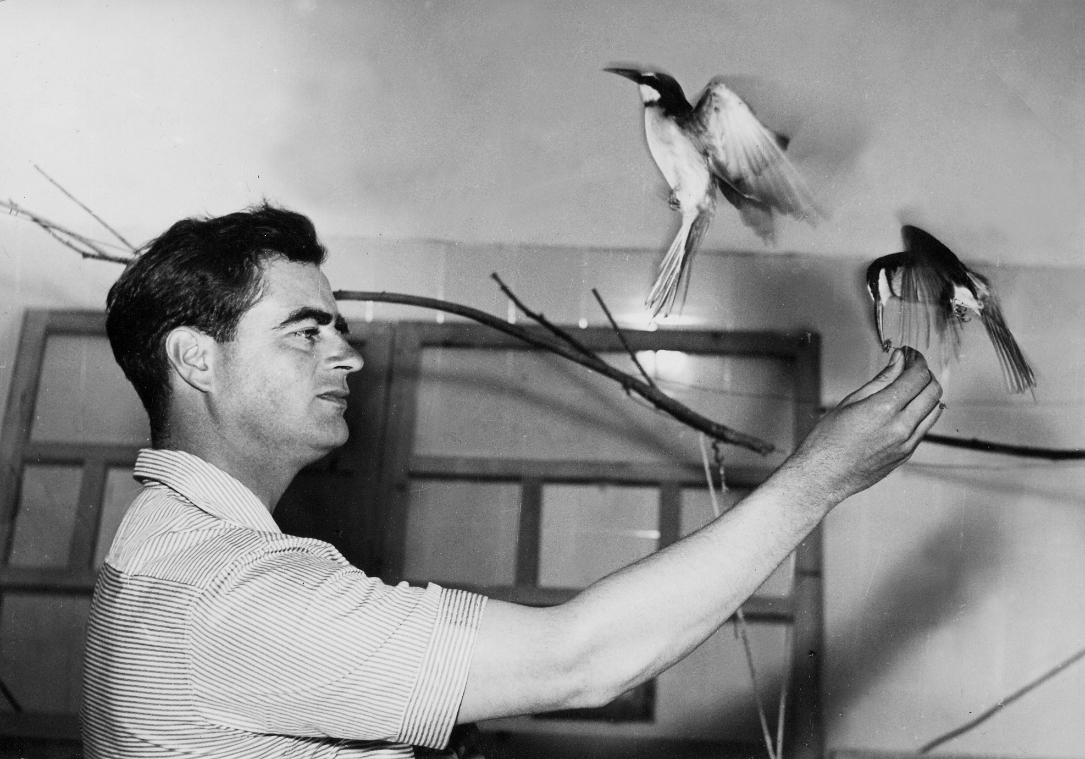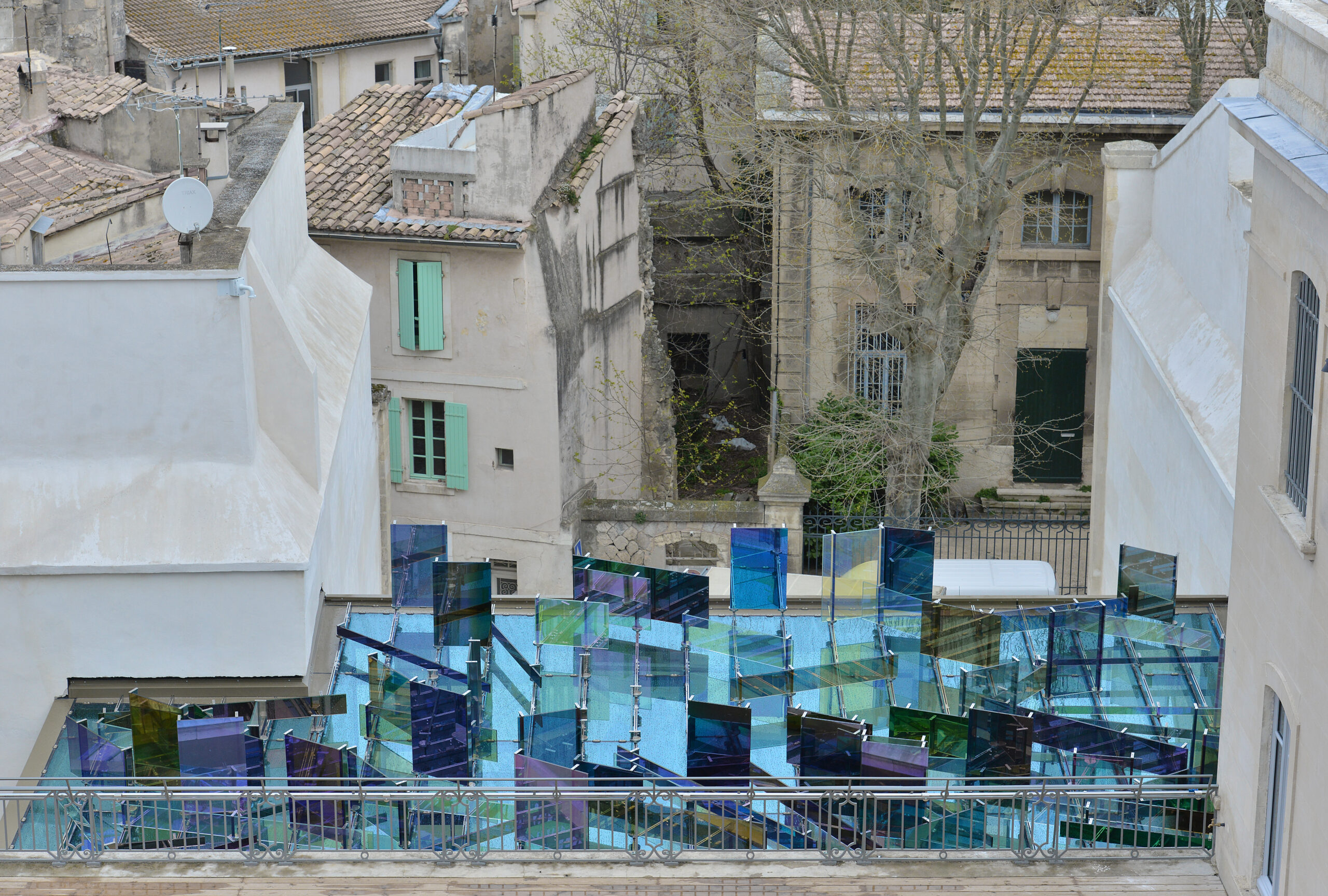The Foundation
Mission
Artistic vision
Vincent van Gogh is a pivotal figure in the art of the 20th century. His oeuvre continues to influence artists and exert an unprecedented magnetism upon the public right up to the present. It was in Arles that Van Gogh produced – within the space of just 15 months between February 1988 and May 1888 – his finest masterpieces.
Inaugurated in April 2014, the Fondation Vincent van Gogh Arles pays due homage to the work of Van Gogh while at the same time exploring his impact upon art today.
This relationship with contemporary art was enshrined within the principles of the Fondation right from its conception. By presenting the painting of the Dutch master in the context of works by contemporary artists, the Fondation aims to stimulate a fruitful dialogue centred on interrogation and reflection.
Adopting a resolutely contemporary point of view towards an artist such as Vincent van Gogh, a central figure in 19th and 20th-century art, also means examining the unparalleled history of his reception. The latter alone would be sufficient to confirm that Van Gogh is an artistic figure still very much alive today.
The goal of the Fondation is to provide a reference point for the life and work of Van Gogh, in the city in which he arrived at many of the defining images of his artistic career, and equally to invite contemporary artists to express their connection to the artist through their own creations.
Gouvernance

« Discovering the Camargue has made me just as interested in waterfowl and the way that wetland eco-systems work as in Van Gogh! All the more so because these wetlands have suffered something of the same fate as Van Gogh in Arles: for a long time completely ignored and forgotten, they are now recognized as playing a crucial role in the workings of nature. In the same way, Van Gogh is today acknowledged as a precursor of modern and contemporary art, in particular when we think of his Arles period. It is our task to make this known. What I have found in Arles is not only a natural landscape of extraordinary diversity, but also a cultural heritage of enormous richness. Van Gogh’s stay is one facet of this, and I want to play a part in ensuring that it is discovered by as many people as possible. »
– Luc Hoffmann (1923-2016)
The Fondation is run by a Board of Directors that meets twice a year and which chiefly decides upon the Fondation’s strategic direction and development.
The Artistic Committee, made up of members of the Board of Directors and prominent individuals from the world of art, is an advisory body which considers artistic proposals and makes recommendations.
The board of directors
Maja Hoffmann, president
Mustapha Bouhayati, treasurer
Kasia Barbotin-Larrieu
François Halard
The Ministry of the Interior or his·her representative
The Ministry of Culture and Communication or his representative
The Mayor of Arles
The artistic board
Kasia Barbotin-Larrieu
Mustapha Bouhayati
Maja Hoffmann
Yvon Lambert
Hans Ulrich Obrist
History
The origins of the Fondation Vincent van Gogh Arles go back to an initiative by Yolande Clergue, who in1983 founded the “Association for the Creation of the Fondation Van Gogh” (subsequently known simply as the Fondation Van Gogh). The Association’s aim was “to generate and promote cultural and artistic activities with reference to the oeuvre of Vincent van Gogh, the time he spent in Arles, and the intention he expressed to establish an international centre of artistic creation and exchange in this town” and “by this means to develop the programme of cultural and social events in Arles and the surrounding region.”
In 2008 Yolande Clergue’s original ambition to create a Fondation Van Gogh was given new momentum by Luc Hoffmann. With his support, steps were taken to set up a non-profit making organization foundation that would provide a permanent framework for activities designed to preserve the memory of Van Gogh in Arles and to foster contemporary art. The new foundation was officially established two years later, by ministerial decree of 8 July 2010, under the name of the Fondation Vincent van Gogh Arles.
That same year, the mayor of Arles proposed that the Fondation should be housed in the Hôtel Léautaud de Donines, a historical, formerly private building that passed into public ownership shortly after 2000. Renovation work began in 2011 to transform the interior into an exhibition space.
In 2012, setting its sights at the highest level, the Fondation’s Board of Trustees offered the position of artistic director to Bice Curiger, who took up office the following year.
Art critic, curator at the Kunsthaus Zürich for twenty years, and curator of the 54th Venice Biennale in 2011, Bice Curiger also contributed to the promotion and dissemination of contemporary art through two magazines: Parkett, which she co-founded in 1984 and of which she has been editor-in-chief until 2017, and Tate etc., published by Tate Modern in London, of which she has been editorial director from 2003 to 2014.
In 2014 Maja Hoffmann took over from her father as President of the Board of Directors.
A few key dates...
-
1983
Yolande Clergue founds the Association for the Creation of the Fondation Van Gogh -
1985
The Association initiates a collection of works by contemporary artists conceived in homage to Vincent van Gogh, including works by Francis Bacon, Roy Lichtenstein and David Hockney -
2010
Creation of the Fondation Vincent van Gogh Arles, directed to the public benefit -
2011
Start of renovation works on the Hôtel Léautaud de Donines, the Fondation’s future home -
2013
Bice Curiger is appointed Artistic Director of the Fondation -
7 avril 2014
Official opening of the Fondation with the exhibition "Van Gogh Live!"
The Collection
The collection of the Fondation Vincent van Gogh Arles was created thanks to the donations of important artists of the 20th and 21st centuries who responded to Yolande Clergue’s wish to establish a bridge between contemporary creation and Vincent van Gogh. From 1983 to 2009, the legacy of Van Gogh takes shape through various personal tributes.
On April 4, 2014, at the inauguration of the Fondation Vincent van Gogh Arles at the Hôtel Léautaud-de-Donines, this collection received the name “Collection Yolande Clergue”.
Building
Architecture and artistic interventions
The work on the Hôtel Léautaud de Donines was initiated with the idea of achieving an architecturally sensitive but potent intervention in a sector classified as a UNESCO world heritage site. The existing building, with a floor area of 2,400 square metres, is thereby receiving its third lease of life. Originally constructed in the fifteenth century as a fortified private residence, in 1924 the mansion was turned into the offices of the Banque de France. It is now assuming a whole new shape in order to house the Fondation Vincent van Gogh Arles. The Arles’ light that so captivated Van Gogh provides the narrative thread running through the design concept by architects Guillaume Avenard and Hervé Schneider of the architectural agency FLUOR.
Artistic director Bice Curiger has also commissioned contemporary artists Bertrand Lavier and Raphael Hefti to create permanent installations that pay tribute to the work of Vincent van Gogh for the entrance areas of the Hôtel Léautaud de Donines.
The entrance gate by Bertrand Lavier is conceived as a hybrid sculpture that blends harmoniously into its surroundings and will act as welcome sign.
In the courtyard, visitors will be greeted by the installation by Raphael Hefti. With the consent of the FLUOR architects, Hefti’s specially conceived work – which operates with the prismatic reflection of light when it meets glass – will be integrated into the structure of the ceiling of the Fondation boutique. The installation employs an unconventional type of glass whose colour and opacity react to changes in the natural Arles light, while at the same time absorbing UV rays and allowing a temperate climate to be maintained inside the space below.
From here the visit continues across 1,000 square metres of exhibition space, following a fluid and unbroken circuit through the different levels, which comprise the main gallery, the atrium, the former office and suite of rooms occupied by the director of the Banque de France.
The visit ends on the terrace on the top floor, offering a panoramic view of the town and its surroundings. From here you can look out across the rooftops of Arles, the Rhône river and the ruined abbey of Montmajour that were so dear to Vincent van Gogh.

The Hôtel Léautaud de Donines was doubtlessly built in the 15th century by the merchant Jacques Grilho, an ancestor of the famous Grille family of Arles.
Over and above the wealth of those who commissioned it, the building displays an architectural shift from the end of the Middle Ages, at a period when, in the urban landscape, private homes on this scale (330 m² surface, on three floors) were not that frequent.
While the building has undergone a large number of modifications over the centuries, it has conserved its fifteen-century architectural fortifications on its upper level. Its general architecture is of the “tower-house” type, covered with a terrace. Now surrounded by a low wall, it was perhaps originally enclosed by merlons¹ and arrow slits. Certain noble houses at the time concealed their roofs with a sophisticated construction of machicolations² and battlements to create the image of a castle, both for its military appearance, and by association with the flat covering of a medieval tower.
On the top floor, there remain bay windows – inherited from Gothic art – with arches supported by small capitals, and which also feature trilobes³. Next to them, there can be found large crossed windows, whose style announces the Renaissance. The other two floors feature what are clearly eighteenth-century window frames, thus showing the remodelling that was carried out at the time.
The interior of the building has retained none of its original features. But a monumental fireplace that decorated the first floor has been donated to the Museon Arlaten.
Occupied by the younger branch of the Grille family until the Revolution, the house was bought in the nineteenth century by Comte Léautaud de Donines.
In the twentieth century, the building was acquired by the Banque de France which thoroughly modified the interior. Liberated from this use in the early 2000s, the building was then purchased by the municipality.
1. Upper part of a parapet between two slits.
2. Construction rising above the top of a tower or wall.
3. Upper part of an arch made up of three lobes.
Team
Bice Curiger, artistic director
Julia Marchand, associate curator
Margaux Bonopera, curatorial assistant
Christine Joblet-Taris, administrative director
Nacéra Ouache, administrative assistant
Béatrice Lavigne, accountant
Kaoutar El Khoudri, administrative and account assistant
Anne-Sophie Foron, director of communications and visitors department
Monica Rambert-Bori, relations with visitors
Michael Burling, ticketing agent
Marie Pellet, ticketing agent
Sabrina Talaalachte, ticketing agent
Sophie Viguier, director of educational programmes
Clémence Despois, mediator
Sara Guti, mediator
Perrine Pellet, mediator
Justine Tallon, mediator
Laurent Éginard, development director
Florence Bon, shop
Brigitte Varro, shop
Daniel Gimenez-Frontin, technical director
Guilhem Gavaudan, technical assistant
Hakim Tayeb, technical agent
Ahmed Moubtahij, technical agent
Najette Chelli, maintenance agent
Isabelle Fournier, maintenance agent
Alice Neurohr, publisher
Security team
Pierre Collet, press relations



